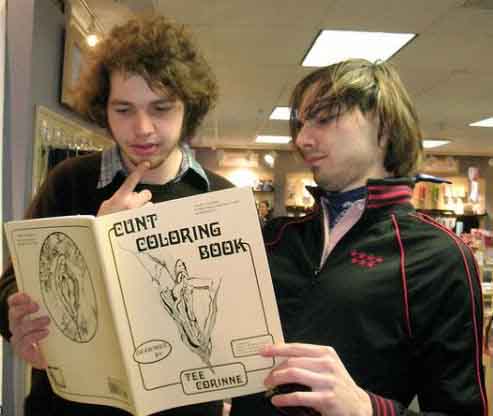Production Dramaturgy and the C-Word
We’ve been having many post-performance discussions of What She Knew with peers and friends concerning the dramaturgy of the script and the production. Also I’ve been participating in a related very interesting discussion on production dramaturgy at the listserv at LMDA
The script is theory not praxis, relative to the particular elements and context of its production, most especially the ensemble. One ensemble will realize the dynamics and nuanced relationships within a script vastly different than another. Neither would necessarily be better or worse — just different. And then, of course, the particular audience will provide the final and most important “translation” of all the elements.
Here’s an anecdote or hypothetical or metaphor to consider:
The C-Word
The playwright has theorized that an actress will be able to say the word “c*nt” without eliciting the negative reactions the utterance of such a laden word evokes in both the actress saying it and the audience hearing it. By c*nt, the playwright means both the female reproductive organ and the female sexual organ. S/he means the c*nt of an erotically transgressive woman who also relishes her fertility and motherhood — so not merely the vagina, but also the vulva. (BTW, Eve Ensler’s The Vagina Monologues is a misnomer. Technically, it should probably be titled The Vulva Monologues as that’s the subject of most of the skits.)
The dramaturg has researched the English lexicon and found that there is no suitable synonym for the word. (The 17th century “c*nny” is softer, but cannot be said without eliciting giggles.)
So the C-Word must be uttered – numerous times in varying contexts. Forget any playwright’s theory on how this word could be said and received. Feminists have had divergent views on the C-Word for decades now, ranging from banning it to embracing/owning it. The C-Word in England has different connotations than in the US. Etcetera, etcetera. It all comes down to the particulars and specifics of the production, foremost with the actress. Will she be able to navigate “c*nt” in such a way as to avoid the visceral reactions? Probably not, but in this instance the production dramaturgy is solely in the hands of the actor.
Good scripts will often confront a social or cultural stigma in a potentially controversial manner. The C-Word or N-Word or F-Word are apt metaphors for the dilemma of staging a polemic. I think “translation” and/or mitigation is the role of production dramaturgy in such cases. We help the ensemble gauge the degree of disruption they are willing to stage.
Here’s our model “production dramaturg” mitigating the C-Word for his players and audience.
Hamlet: Lady, shall I lie in your lap?
Ophelia: No, my lord.
Hamlet: I mean my head upon your lap?
Ophelia: Aye, my lord.
Hamlet: Do you think I meant country matters?
Ophelia: I think nothing, my lord.
Hamlet: That’s a fair thought to lie between maids’ legs.

One thought on “Production Dramaturgy and the C-Word”
i don’t have email at the day-gig, so i’m posting this here, just in case it’s your teepee. couldn’t remember which bridge you did yours at, so just in case….
http://www.boweryboogie.com/2011/03/the-shantytown-of-the-manhattan-bridge-approach/#
Comments are closed.